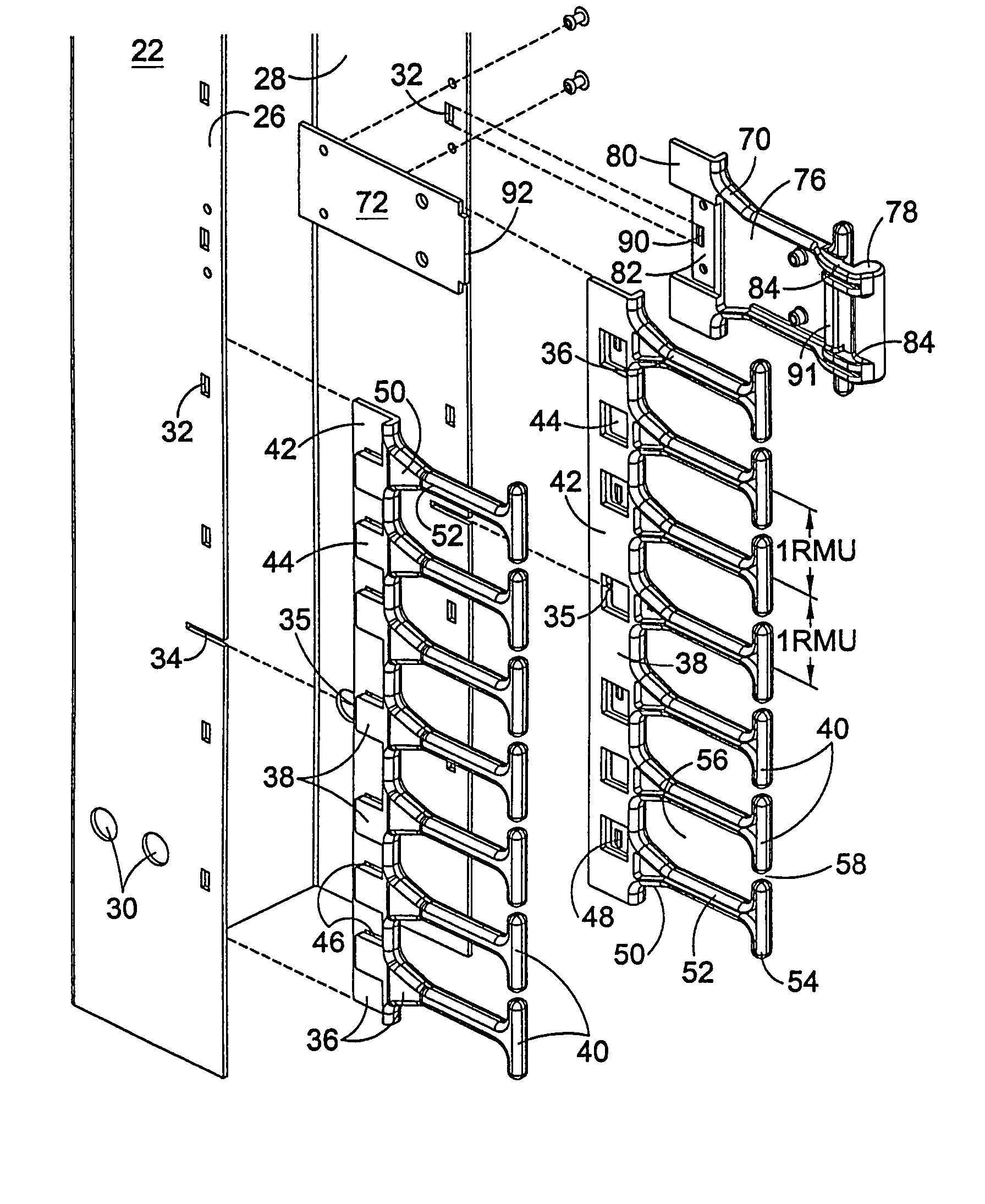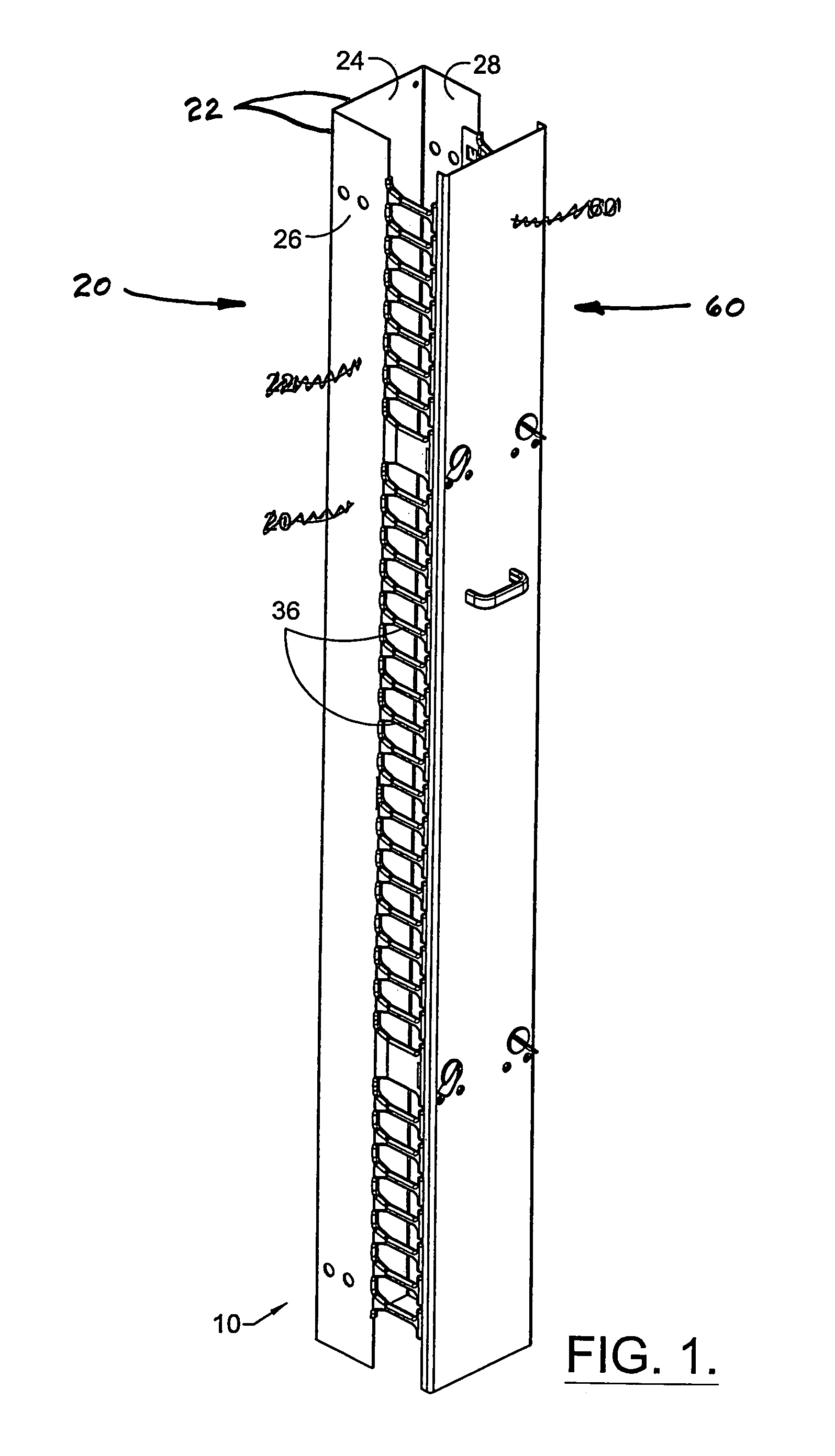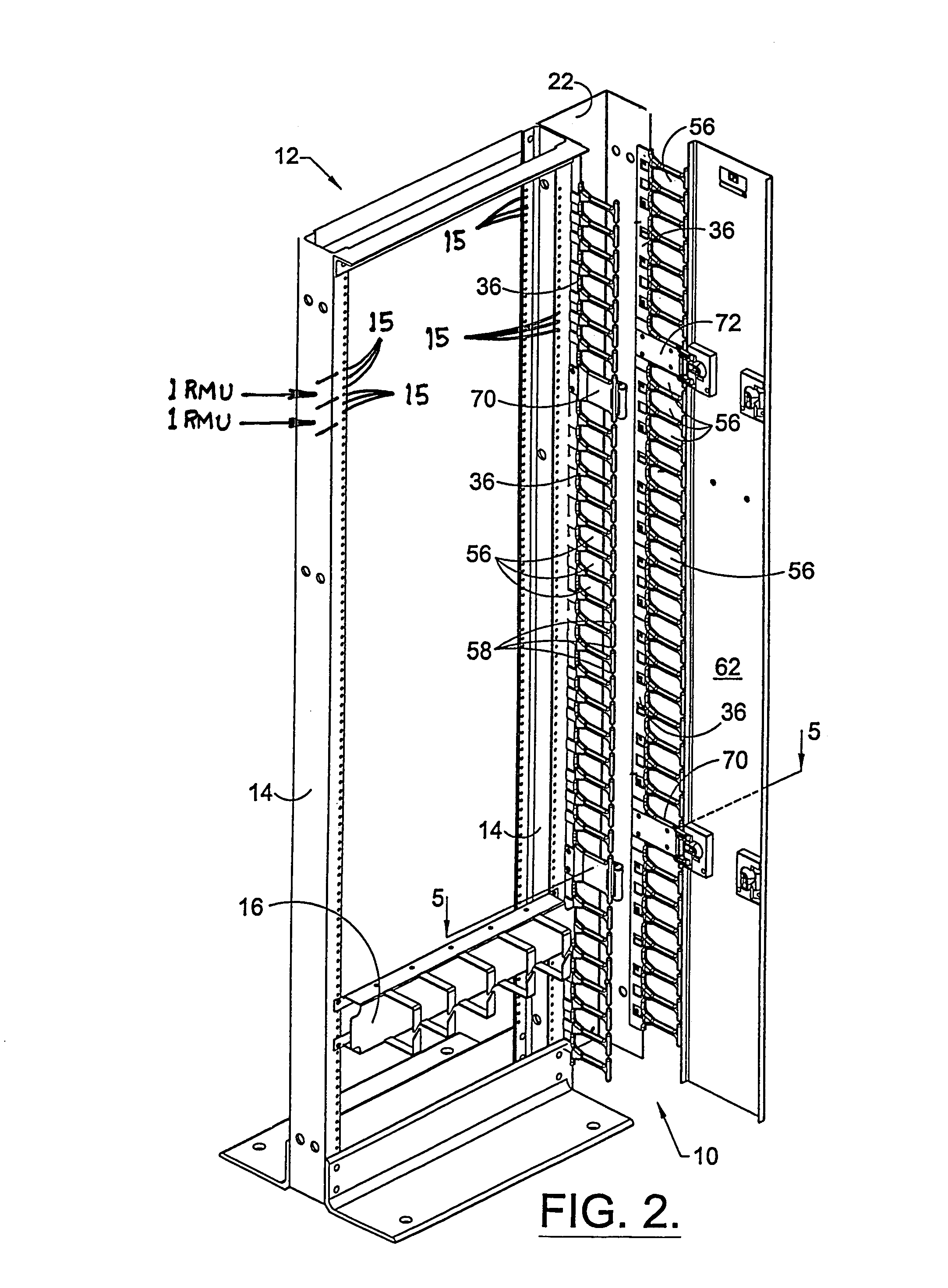Vertical cable management rack
a vertical cable and rack technology, applied in the field of racks, can solve the problems of small openings that are often insufficient to handle, weiss designs suffer from a number of drawbacks, and the size of the openings is relatively limited
- Summary
- Abstract
- Description
- Claims
- Application Information
AI Technical Summary
Benefits of technology
Problems solved by technology
Method used
Image
Examples
Embodiment Construction
[0037]FIG. 1 is a perspective view of a vertical cable raceway 10 in accordance with a first preferred embodiment of the present invention. In this embodiment, the vertical cable raceway 10 comprises a channel assembly 20 and a cover assembly 60. The channel assembly 20 includes a trough 22 and a plurality of cable guides 36. The trough 22 has a base member 24 and two side members 26, 28 extending perpendicularly therefrom. The trough 22 may be formed from a sheet of suitable metal, such as aluminum or steel, and bent into shape, or it may be machined or extruded from a suitable metal material. As perhaps best illustrated in FIG. 3, each side member 26, 28 includes a plurality of circular apertures 30 for mounting the trough 22 to a rack 12, frame, cabinet or the like, as shown in FIG. 2, and an evenly-spaced series of small rectangular apertures 32 extending along its outer edge for mounting the cable guides 36 thereto.
[0038]FIG. 3 is an exploded perspective view of a portion of th...
PUM
 Login to View More
Login to View More Abstract
Description
Claims
Application Information
 Login to View More
Login to View More - R&D
- Intellectual Property
- Life Sciences
- Materials
- Tech Scout
- Unparalleled Data Quality
- Higher Quality Content
- 60% Fewer Hallucinations
Browse by: Latest US Patents, China's latest patents, Technical Efficacy Thesaurus, Application Domain, Technology Topic, Popular Technical Reports.
© 2025 PatSnap. All rights reserved.Legal|Privacy policy|Modern Slavery Act Transparency Statement|Sitemap|About US| Contact US: help@patsnap.com



